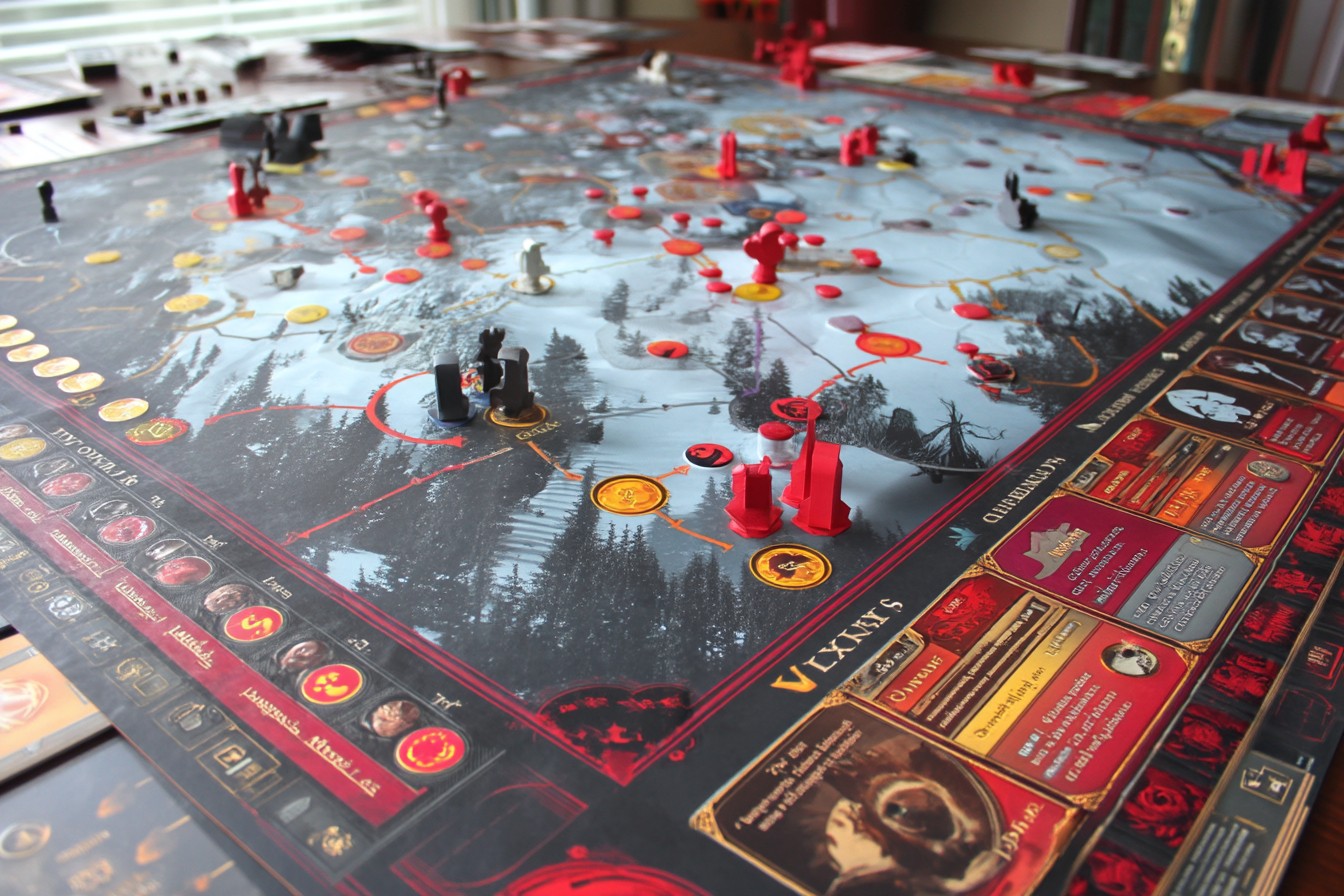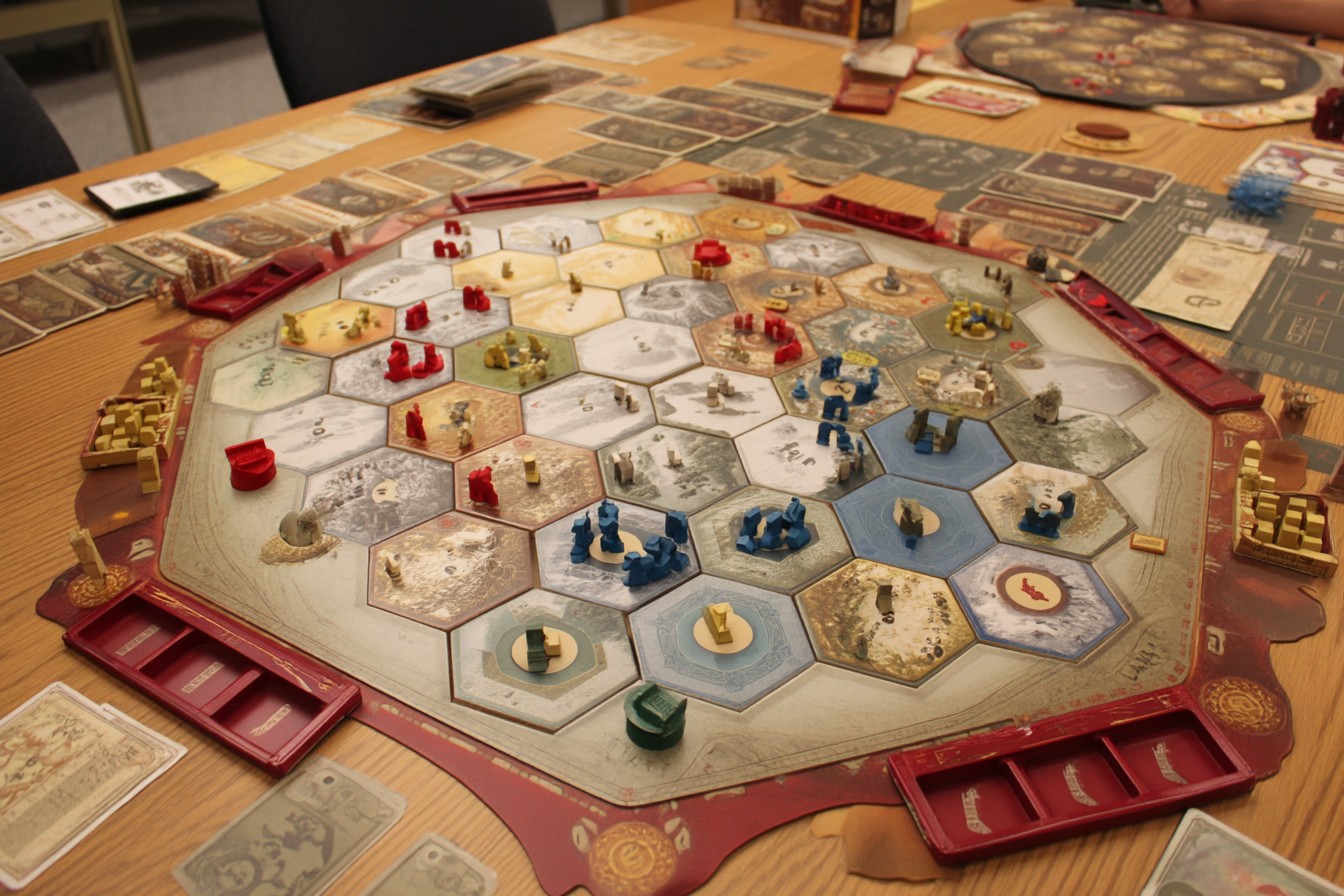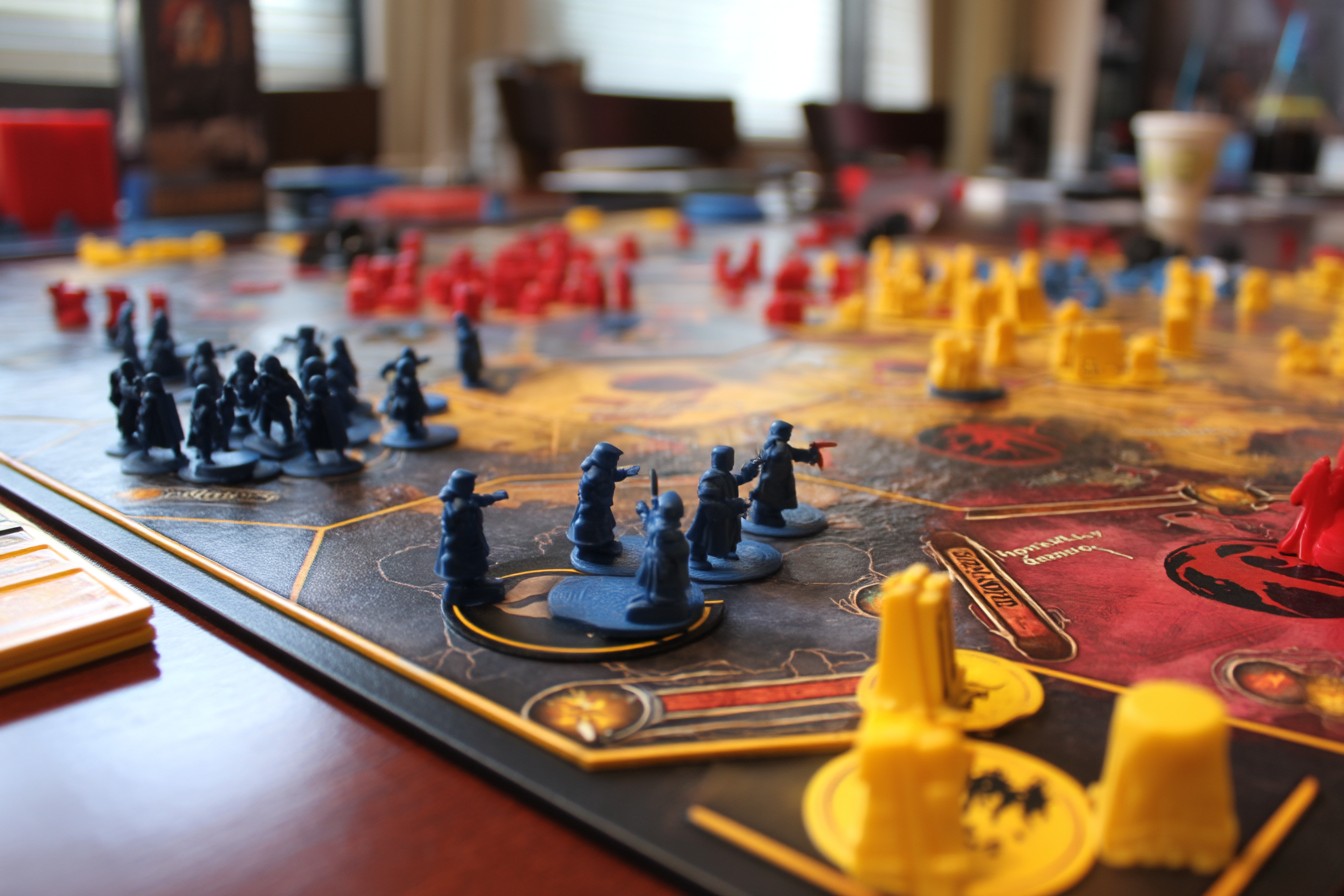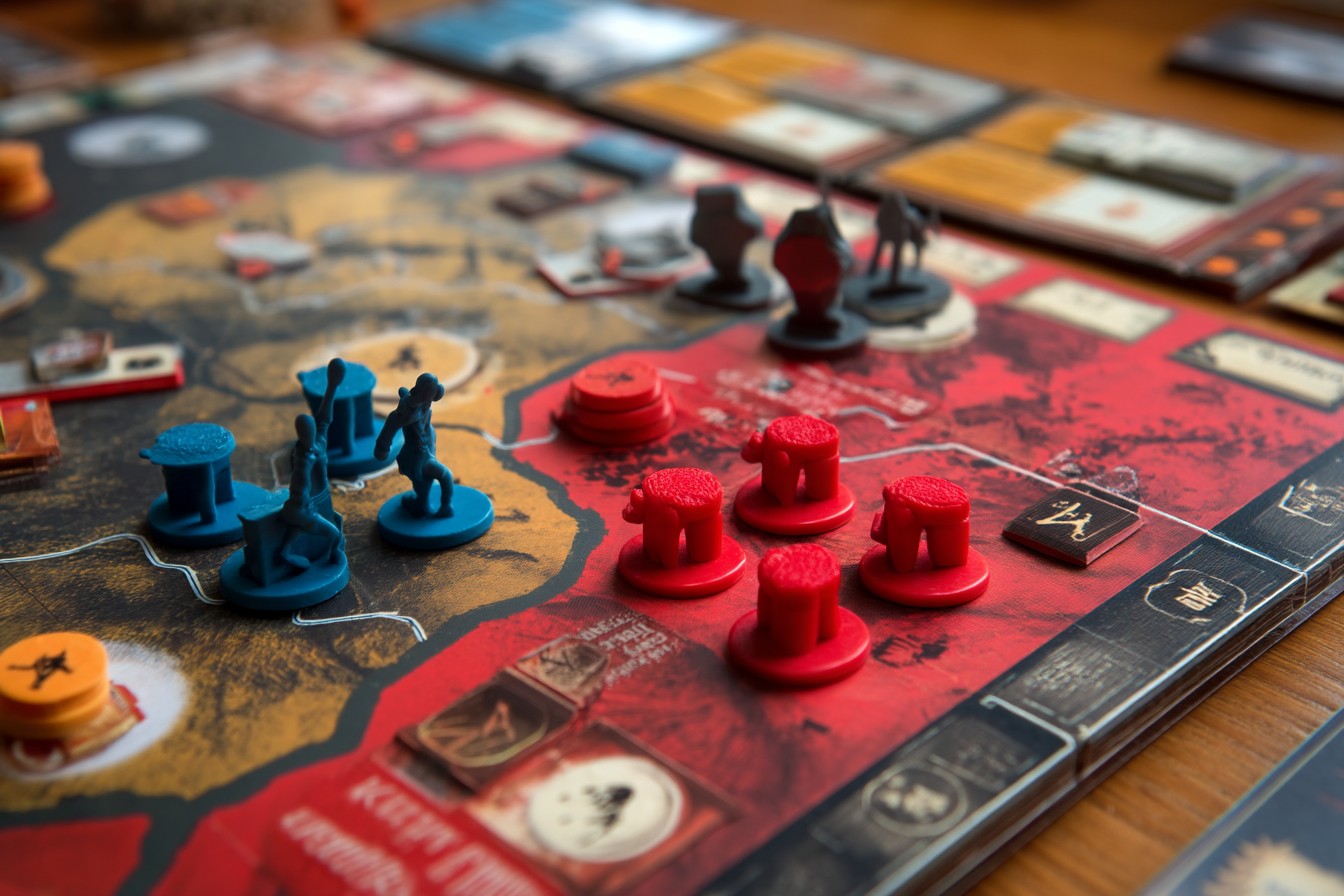I still remember the first time I set up Scythe with my regular Tuesday night group. Jake, who’s always quick with the jokes, looked at the imposing mechs and asked, “So it’s like chess with giant robots?” Not exactly, but that misconception actually worked in my favor when I executed a first-turn resource production that had him scratching his head twenty minutes later. “Wait, how do you already have that much stuff?”
That moment—when your engine starts humming while others are still figuring out which levers to pull—that’s what I want to talk about today. Because in Scythe, your opening moves aren’t just important; they’re often the difference between victory and spending the whole game playing catch-up.
I’ve played Scythe 97 times (yes, I keep a spreadsheet—Linda finds this hilarious) with every faction-mat combination multiple times. Those first three turns establish trajectories that ripple throughout the game, and I’ve distilled those experiences into some principles that work across the board, followed by specific advice for each faction-player mat pairing.
First, though, let’s address a fundamental truth: there’s no single “correct” opening for any combination. Your strategy should always respond to board state, opponent positions, and especially their faction-mat combinations. What works against Saxony with an Industrial mat might be suicide against Rusviet with a Patriotic board. That said, some approaches consistently outperform others, and that’s what we’re exploring.
Let’s start with three universal principles:
1) Understand your economy bottlenecks immediately. Every faction-mat combo has a limiting factor—workers, power, coins, combat cards. Identify yours and address it first.
2) Plan for adjacency bonuses. Your third action should already be benefiting from what you did in turns one and two. This sounds obvious but you wouldn’t believe how many players I’ve seen take completely disconnected actions in their first three turns.
3) Don’t obsess over the objective card yet. Unless it’s something stupidly easy to accomplish early, like “have 3 workers,” focus on economy first. I’ve seen too many games lost by players derailing their opening to grab a star that could have waited.
Now for the specific combos. I can’t cover all 25 possible faction-mat pairings in detail (my editor would kill me, and this article’s already running long), but I’ll hit the most interesting ones and some principles you can apply to others.
Crimea + Industrial: This combo is bonkers if played correctly. First action? Bottom-row production, paying a coin for the extra resource. Second action? Trade for combat cards, using your faction ability to grab coins. Third action? Deploy a mech, probably the one that lets workers cross rivers. You’re now set up for aggressive worker placement and territory control while others are still figuring out how to get their second worker.
Rusviet + Patriotic: Your faction ability lets you repeat actions, so leverage that early. Start with production (bottom row), then bolster for power and a combat card. Your third action depends on the board, but I’m partial to moving workers to threaten territories adjacent to opponents’ starting positions—the psychological impact is worth it even if you don’t attack right away. The flexibility of ignoring action limitations means you can actually react to the board state rather than being locked into a predetermined sequence.
Polania + Agricultural: This one’s trickier but can be devastating with the right approach. First turn has to be trade for coins (bottom row if possible), then immediately into enlist for both the immediate and ongoing benefits. Your faction ability to cross rivers gives you early flexibility other factions lack, so your third action should be move, positioning workers to reach resources others can’t. I once used this opening to claim a resource-rich territory on turn four that my opponent (playing Nordic) had assumed was safe until they got their river-swimming mech out.
Nordic + Engineering: Start with a bottom-row production, paying the coin for an extra resource. Second action should be bolster to gain power and combat cards. Third action? Move workers to spread out, leveraging your ability to cross rivers from the start. This puts you in position to threaten multiple territories early, forcing opponents to react to you rather than optimizing their own openings.
Saxony + Mechanical: Your faction ability to get unlimited combat and objective stars means you should be more aggressive than others. Start with bolster (bottom row if possible) to gain power and cards. Second action is production to get resources for your first mech. Third is either deploy that mech or move to threaten an opponent, depending on board state. This opening puts everyone on notice that you’re not building a peaceful engine.
Some combos create unusual opportunities you might miss. For instance, I once played a game as Crimea with the Innovative mat where I realized I could get my third combat card on the second turn, enabling an unexpected combat on turn three that secured me the factory card before anyone else could even reach the factory. My opponent Kevin still brings this up years later, usually right before he chooses his faction in our games.
What about the weaker combinations? If you’re stuck with something like Nordic + Patriotic, you need to lean into worker production earlier than ideal. First bottom-row bolster for power, then produce for workers, then move to position for resources. It’s not sexy, but it sets up a mid-game where your worker mobility can shine.
I’ve found that players often overvalue their starting positions when they have combat-focused factions like Saxony, rushing to build mechs and gain power while neglecting their economic engine. Unless you’re playing against absolute beginners who ignore defense, this rarely works. Even combat-oriented factions need resources and options, which means you still need to prioritize economy in those crucial first turns.
One last tip—watch what player mats your neighbors choose. If someone to your left takes Industrial, and you know they’ll be producing early and often, that might change which territories you want to move toward. I once completely altered my standard Polania opening because my neighbor chose a combo that I knew would make them resource-hungry in the same direction I planned to expand.
Your first three turns in Scythe establish the narrative for your entire game. Execute them thoughtfully, with clear understanding of your faction-mat synergies, and you’ll find yourself with options while your opponents are still trying to figure out what went wrong with their plans.
And isn’t that the most satisfying way to win? Not through luck or a single brilliant move, but through a foundation so solid that victory feels inevitable by mid-game.
Next time you sit down to play Scythe, take a moment before your first action. Look at your faction, your player mat, the board state, and your opponents’ factions and mats. Your path to victory is right there—you just need to see it before anyone else does.




Leave a Reply